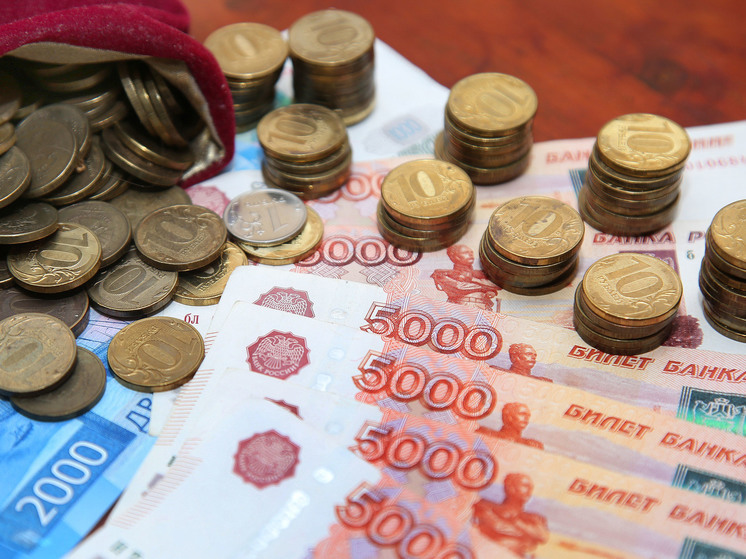Will the “wooden” one go astray soon
First Deputy Prime Minister Andrey Belousov, during the St. Petersburg International Economic Forum, called the “comfortable rate” of the Russian currency: 80-90 rubles per dollar. Now dollar quotes are within this corridor. Meanwhile, according to experts, the prerequisites for the ruble's value to soon go beyond the designated boundaries have already been outlined.

Since the beginning of this year, the Russian currency has fallen in price against the dollar by almost 18%, with more than half of the fall in May. In recent days, the «American» is traded for about 84-85 rubles. “From my point of view, now the ruble is in a more or less optimal zone for the economy. A dollar at 80-90 rubles is comfortable for the Russian budget, as well as for exporters and importers,” Belousov said.
The First Deputy Prime Minister does not hide the fact that such a high exchange rate of American banknotes is rather in the interests of the government and big business, but does not say anything about how the depreciation of the national currency will affect ordinary citizens. The head of the Central Bank, Elvira Nabiullina, believes that the depreciation of the ruble exchange rate will be gradually transferred to prices.
MK asked financial market analysts how long the dollar would stay in the indicated corridor, when and under what conditions it would go beyond it .
“Last year, Belousov also named the desired course — then he announced a corridor of 70-80 rubles. The first vice-premier's correction of the “comfortable exchange rate” of the ruble suggests the following. Compared to last year, when the optimal value of foreign currency was lower, this year the volume of cash receipts from exports, as well as the overall flow of dollars and euros into the country, have significantly decreased. As a result, revenues are falling and budget expenditures are growing, the deficit of which has already exceeded the level planned for the whole year.
To compensate for such negative phenomena, a higher exchange rate against the ruble is needed. Then each sold unit of the exported product brings the treasury more rubles of income: from oil or gas, even from wheat or timber. Therefore, Belousov raises the bar for a rate that is comfortable for exporters and the budget.
With the population — the question is more complicated. On the one hand, currency appreciation raises import prices, accelerates inflation and reduces real incomes. On the other hand, a huge number of people receive money from the budget. Not only “state employees, but also many others through benefits, pensions, medical care, state education. The «hole» in the treasury affects almost everyone. A decrease in its size due to the depreciation of the national currency smooths out budgetary problems.
In general, the long-term dynamics confirms the trend towards the weakening of the ruble. This is due to the structure and characteristics of our economy. Even if sometimes currencies become cheaper against the ruble, then they reach higher «optimums».
“As long as the inflation rate in the country does not go beyond the forecast values of the Central Bank, the exchange rate can stay in the corridor designated by Belousov in order to gradually reduce the budget deficit. However, there are all prerequisites that the annual inflation in Russia will begin to grow in the coming months. Already in July 2023, the Central Bank is likely to raise the key rate, which will lead to the strengthening of the national currency, so the dollar will soon begin to decline towards 80 rubles.
“Last year, after the sanctions were imposed, Russia had practically no way left to restrain the exchange rates of foreign currencies. Therefore, it is not a fact that the dollar will not go beyond 90 rubles. Among market participants, there is an opinion that almost the main source of currency purchases, and therefore — the growth of its exchange rate, is now transactions for the sale of their Russian assets by foreign players. For transactions, the currency is purchased on the open market, at the auctions of the Moscow Exchange, and then it is withdrawn abroad. As a result, after voicing major transactions with foreigners, the ruble weakens. From June 1, there should have been a limitation on the volume of monthly currency purchases for such transactions. So far, no positive effect has been seen, and the ruble is weakening for no particular fundamental reasons.”
“Even recently, Belousov argued that 70-80 rubles per dollar is a comfortable exchange rate. His statements should not be taken as a strict target. Of course, exporters benefit from the current high dollar exchange rate, which allows them to receive large incomes. Well, the population, as always, is the loser. A weak national currency contributes to an increase in inflation: following the prices of imported goods, the cost of domestic products will rise. Ordinary inhabitants will lose the opportunity to buy branded items, go to resorts — the quality of life as a whole will fall. The state treasury will also suffer: the government will have to index the fall in incomes of the most vulnerable segments of the population.
The current situation on the geopolitical front, as well as the global financial crisis, a catastrophic recession and the risk of a collapse in oil prices to $40-50 per barrel suggest that that the rate of the Russian currency will continue to weaken towards 100 rubles per dollar.


